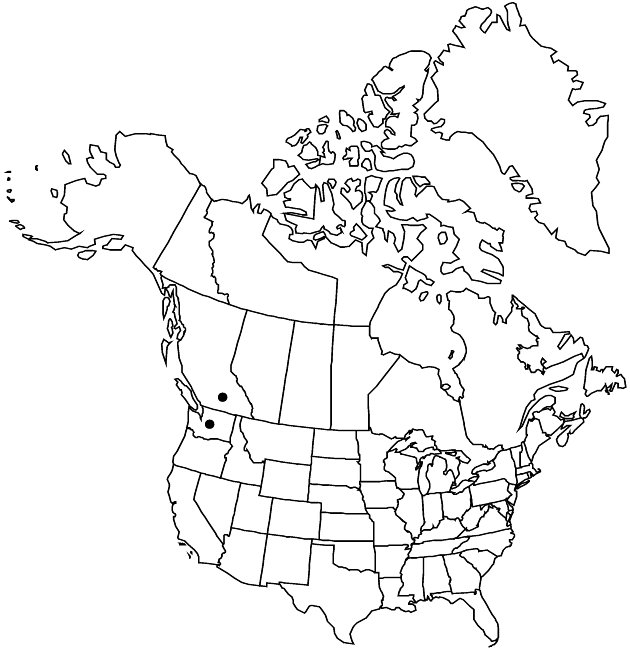Erigeron salishii
Canad. J. Bot. 66: 414, fig. 1. 1988.
Perennials, 1.5–5 (–7) cm (forming densely compact cushions); taprooted, caudex branches rhizomelike, relatively numerous, short, and slender. Stems erect (simple, scapiform), sparsely to densely hirsuto-villous, minutely glandular. Leaves basal (persistent; petioles linear, 0.5–1 mm wide); blades obovate-spatulate, 3–16 × 3–6 mm (bases abruptly expanded), margins mostly 3-lobed, rarely entire or 2-lobed (lobes 2–8 mm, oblong to ovate or obovate, rounded), ultimately entire, coarsely ciliate, faces sparsely to densely hirsute, ± minutely glandular. Heads 1. Involucres 5–7 × 8–11 mm. Phyllaries in 2–3 series (commonly purplish, sometimes at tips only), sparsely to densely hirsuto-villous to villous (hairs usually with colored cross-walls), minutely glandular. Ray-florets 15–32; corollas white to bluish, 6–10 mm, laminae not coiling or reflexing (spreading). Disc corollas 3.2–4.5 mm. Cypselae 2–2.6 mm, 2-nerved, faces sparsely strigose; pappi: outer of setae, inner of 15–21 bristles. 2n = 18.
Phenology: Flowering Jul–Sep.
Habitat: Cliffs and gravelly slopes, ridges, ledges
Elevation: 1500–2150 m
Discussion
Of conservation concern.
The compactly cespitose, cushionlike habit of Erigeron salishii may obscure the slender, loose branches of the caudex in herbarium specimens. The species otherwise is similar to E. vagus; the leaves of E. salishii are mostly smaller and the hairs thinner and looser (villous) compared to those of E. vagus.
Selected References
None.
